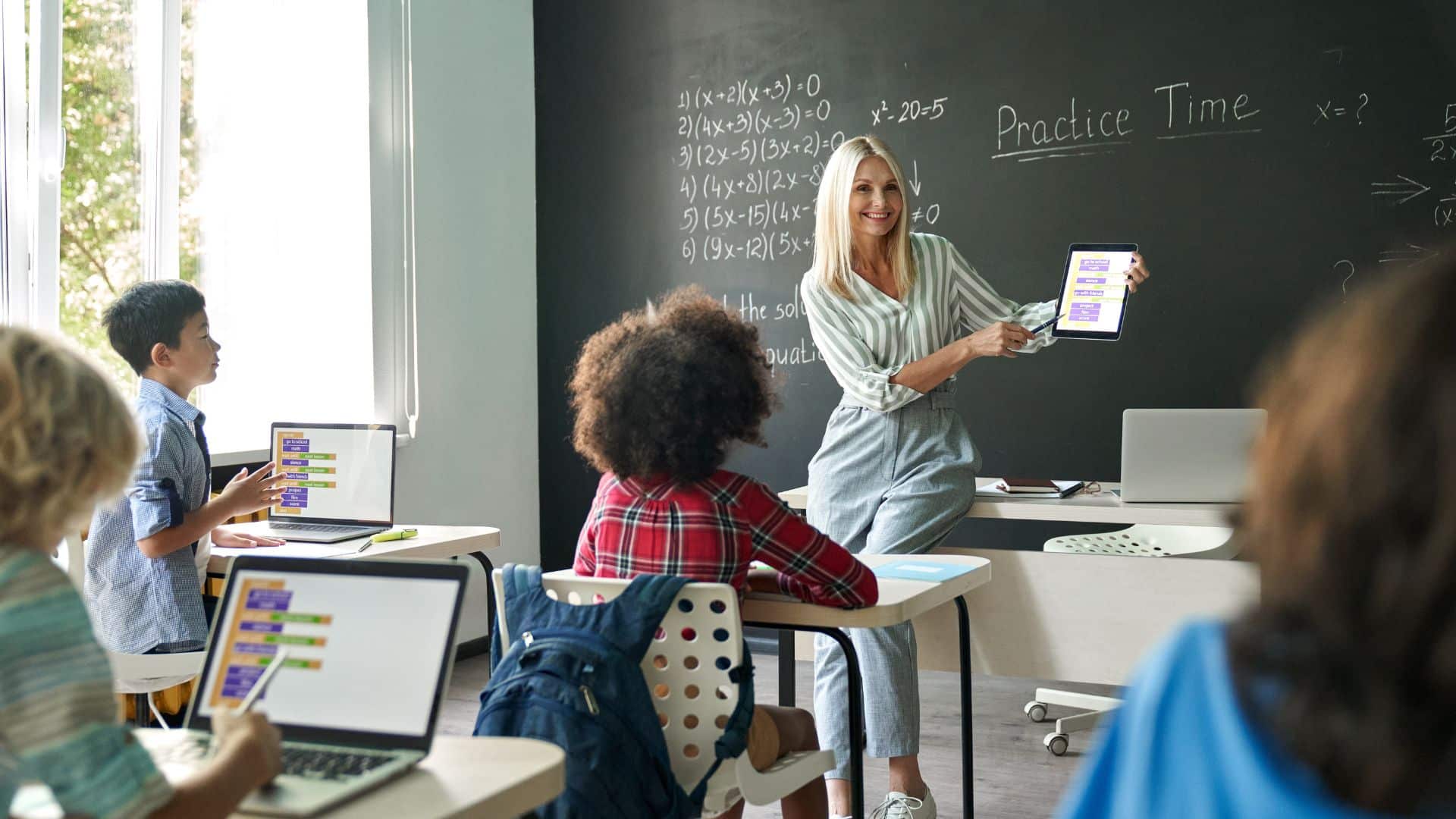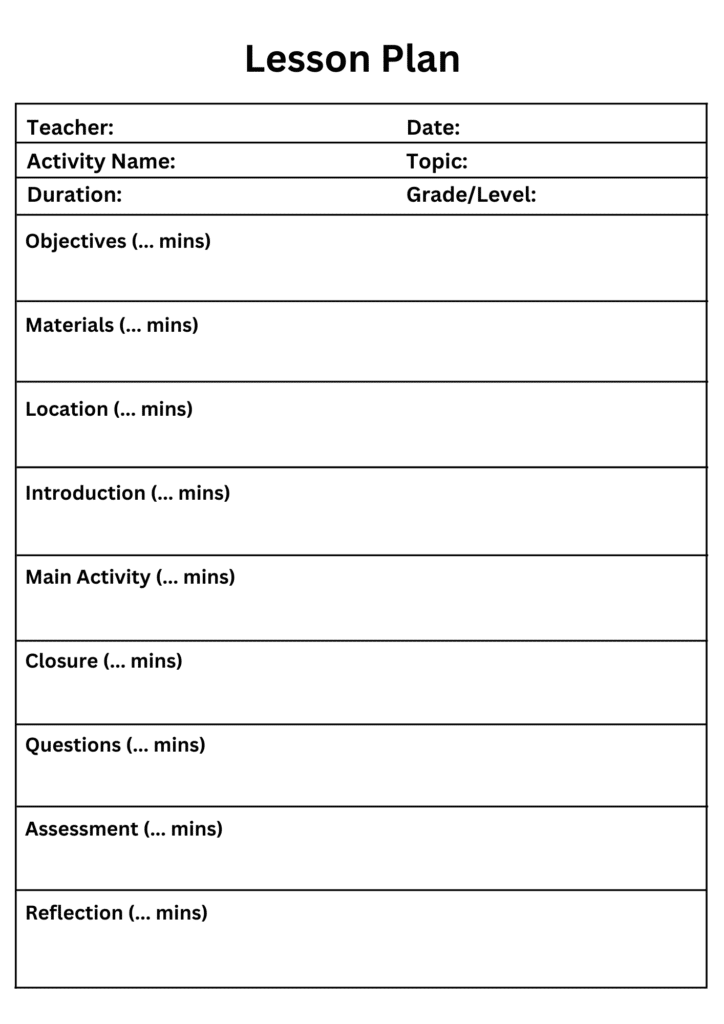If you are someone who works in the education industry, you would be familiar with the term “lesson plan”. Even if you are not a part of that field, you are very likely to have heard about lesson plans when you were a student.
A lesson plan is an integral aspect of the learning process. We often describe lesson plans as an outline of the student’s learning process. It shows what they are going to learn, why they are learning it, and how they are going to learn it. Constructing a lesson plan before starting learning activities allows teachers to maximize the session and the students to have a more fruitful learning experience.
Lesson plans should include a few things such as learning objectives, learning activities, and timeline. It also must not only fulfill the teacher’s expectations but also aid students’ improvements.
Due to the amount of planning and consideration it requires, designing a suitable lesson plan could come with its challenges. That is why many high-quality schools and enrichment centers are utilizing the help of School Management Software. If you are unfamiliar with the term, School Management Software is an automation tool that integrates the school’s operational process with digital technology to make it more efficient.
Nowadays, there are a lot of providers that offer this software at a competitive price. Check out the software pricing scheme if you are interested in optimizing school management as the top academic institutions did, then continue reading this article to learn more about planning an effective lesson plan.
Table of Content:
Table of Content

What to Do Before Preparing a Lesson Plan
In order to make a great learning plan, you must not jump in right away to create it. There are some aspects you must consider so that the lesson plan can be effective. This includes thorough observations and considerations regarding the learning process. Here are some of the steps you can do before preparing a lesson plan.
-
Set learning goals
Before planning your lesson, you need to pinpoint first the “what” and the “why”. What is the knowledge students will gain after the experience? More importantly, why is it so important for them to learn it? That is the question you can base your learning goals on. Learning goals or learning objectives are a specific purposes of a learning process that students are hoping to fulfill by the end of the lesson. It is important to set these objectives so there is a clear path from where the students are to where you want them to be. Learning goals are generally direct as well as easy to understand. Other than that, they are also easy to measure, demonstrate, and achieve in class through tasks. Linking your learning goals to the syllabus objectives as a whole will help you get the most out of each learning experience.
-
Develop learning activities
When you are planning the class activities, it is important to ensure that they are aligned with the learning objectives as well as engage the students in a meaningful and collaborative way. Furthermore, the activities should constructively build students so they can take what they learned to use it in real life. There are different categories of activities you could try in class. The first one is activities centered around the teacher and the students such as lectures, practices, quizzes, or presentations. There are also student-to-student activities such as discussions or debates. If you want something more lighthearted, you can also consider games and simulations. Lastly, activities that require critical thinking such as projects, concept mapping, and case studies are also suitable in class. Do not forget to estimate the time each activity will require to create a cohesive set of activities that flows well between one another.
Also read: Best Automation Feature in School to Facilitate Student in Learning
-
Measure student understanding
Evaluating how far the students have learned prior to the class will help you limit the scope of the lesson. You will be able to know which parts of the topic should be excluded since it might be too challenging, or oppositely, it might be redundant and unnecessary if the students have to study it again. Ultimately, teachers must toe the line between challenging the students and being aware of their abilities. After the class, it would be beneficial to compare the pre-class knowledge to post-class knowledge through assessments. It provides a chance for students to demonstrate what they learned throughout the class & for teachers to give feedback. What teachers need to do before the class is to decide what type of assessment would be the most suitable, whether it is tests, practice sheets, problem sets, or projects.
-
Plan a suitable lesson sequence & schedule
After you decide on the activities, narrow them down to only two or three in each class and consider how much time it will take you to finish each activity. Include these estimates in your lesson plan, but be prepared to make adjustments to your lesson plan. You might have to add some more time according to how the class is doing. Usually, what ends up being the most successful way of learning is keeping an open mind about the process. Your learning objectives are the ones that will be your guide in making decisions on the spot. Other than the time of each activity, do not forget to also plan the lesson schedule according to the syllabus as the overarching timeline guide.
-
Lesson closure planning
The end of the lesson is as important as the start. Before you close the session, encourage your students to reflect on that day by allocating a certain amount of time for reflection. Reflection can be beneficial in a variety of ways, such as a benchmark to adjust future lessons, highlighting information that needs to be emphasized, and summarizing the learning process. Furthermore, you can address any misconceptions if there are some questions from the students. Ask your students to describe their learning experience that day during the reflection period. They will find reflection as a helpful tool to internalize the lesson’s important ideas, connect this learning to larger concepts and/or prior topics, and apply this knowledge they got in the appropriate contexts.
Lesson Plan Presentation
A lesson plan should not just be accessible to the teachers. It is best for students to understand it through a presentation during class. You can include your lesson in the AI presentation slides for that particular session’s lecture, the syllabus, or even the exercise sheets. Optionally, you can directly tell the students verbally in front of the class. Doing so allows for clear communication on what the teacher hopes the students to achieve in terms of in-class performance. Presenting your plan can also keep students on track as well as interested in their learning since there is a clear organization and purpose of their study.
Lesson Plan Reflection
After you end the session, it is important to reflect on it to assess what worked and what did not. Explore why certain methods work better than others and how you can improve in the next session. It is completely normal to leave space for adjustments in your lesson plans to adapt according to your students’ responses. Evaluating your lesson plans can make them more true to the classroom conditions and thus will result in a better learning experience overall. Here are a few questions you can use as reflection prompts:
- Did the students take the same lessons as intended in the plan?
- Did the class structure & activities support the class well?
- In which part(s) did most students experience difficulties?
- In which part(s) did most students seem to enjoy the best?
- Is there anything to change about this topic, if it is going to be taught again?
Also read: Why Schools Prefer a School Management System?
Lesson Plan Example
Now that you know how to make a great lesson plan, it is time to actually put it on paper. You can create it from scratch manually in your notebook or digitally in word processors such as Google Docs or MS Word. However, if you want to save time and stress, you can create your lesson plan from a customizable pre-made template. Templates allow for an easier planning process because all you have to do is fill the existing table and adjust it as you wish. School Management Software is a tool that offers one of the widest ranges of original lesson plan templates. Below is an example of a lesson plan template that you can use as a guide.
Conclusion
Every step in a lesson plan—preparation, presentation, and reflection—contributes to the class’s outcome. Creating an effective plan requires genuine care for the student’s learning process and thorough preparation.
Key elements include setting goals, choosing activities, organizing schedules, planning closures, presenting, and reflecting on the lesson. Balancing these tasks with other administrative duties can be challenging, making School Management Software essential.
This software simplifies operations by managing attendance, customizing admission policies, and tracking activities and inventories. It allows educators to focus on improving education quality.
HashMicro School Management System, trusted by top academic institutions in Singapore and Indonesia, centralizes data for efficient school operations. Check out HashMicro’s pricing scheme and register for a free consultation to learn more about this transformative software.




































